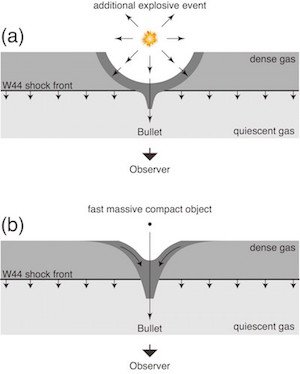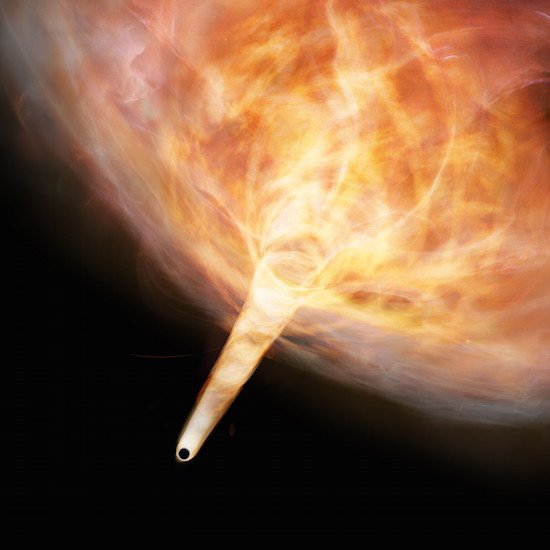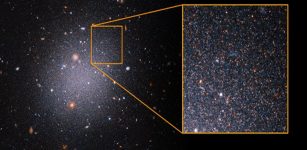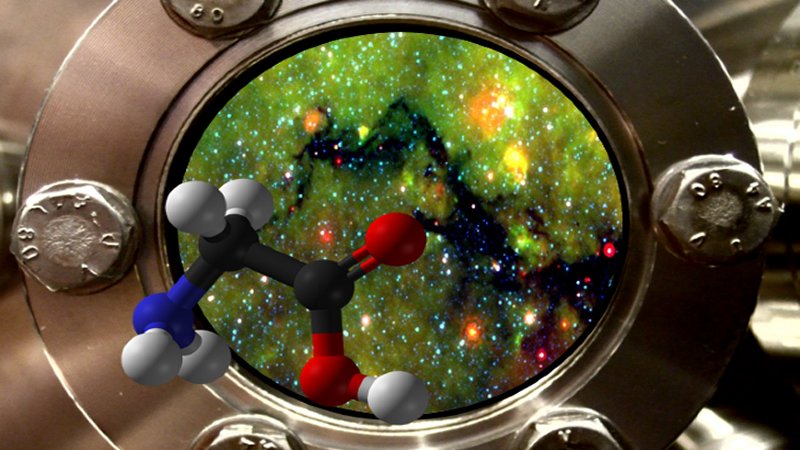The Bullet: Mysterious Cloud Of Molecules Tearing Through The Milky Way
MessageToEagle.com – Millions of quiet black holes are hiding in the Milky Way and one of them has just been found. By analyzing the gas motion of an extraordinarily fast-moving cosmic cloud in a corner of the Milky Way, astronomers found hints of a wandering black hole hidden in the cloud.
It is difficult to find black holes, because they are completely black. In some cases black holes cause effects which can be seen. For example if a black hole has a companion star, gas streaming into the black hole piles up around it and forms a disk. The disk heats up due to the enormous gravitational pull by the black hole and emits intense radiation. But if a black hole is floating alone in space, no emissions would be observable coming from it.
Black holes also vary in size. Monster black holes can be 10 billion times greater than the Sun.

Credit: Yamada et al. (Keio University)
A group of astronomers at Keio University, Japan, have observed molecular clouds around the supernova remnant W44, located 10,000 light-years away from us. At the edge of W44 they found signs of a hidden black hole.
During the survey, the team found a compact molecular cloud with enigmatic motion. This cloud, named the “Bullet,” has a speed of more than 100 km/s, which exceeds the speed of sound in interstellar space by more than two orders of magnitude. In addition, this cloud, with the size of two light-years, moves backward against the rotation of the Milky Way Galaxy.
The data indicate that the Bullet seems to jump out from the edge of the W44 supernova remnant with immense kinetic energy. “Most of the Bullet has an expanding motion with a speed of 50 km/s, but the tip of the Bullet has a speed of 120 km/s,” said Masaya Yamada, a graduate student at Keio University.
“Its kinetic energy is a few tens of times larger than that injected by the W44 supernova. It seems impossible to generate such an energetic cloud under ordinary environments.”
See also:
Himiko Cloud: Most Massive Object In The Early Universe
Super Massive Black Holes Lurking In The Hearts Of Galaxies
Wandering Black Hole Found 4.5 Billion Light Years From Earth
The team proposed two scenarios for the formation of the Bullet. In both cases, a dark and compact gravity source, possibly a black hole, has an important role. One scenario is the “explosion model” in which an expanding gas shell of the supernova remnant passes by a static black hole.
The black hole pulls the gas very close to it, giving rise to an explosion, which accelerates the gas toward us after the gas shell has passed the black hole. In this case, the astronomers estimated that the mass of the black hole would 3.5 times the solar mass or larger.
The other scenario is the “irruption model” in which a high speed black hole storms through a dense gas and the gas is dragged along by the strong gravity of the black hole to form a gas stream. In this case, researchers estimated the mass of the black hole would be 36 times the solar mass or larger. With the present dataset, it is difficult for the team to distinguish which scenario is more likely.

Credit: Keio University
Theoretical studies have predicted that 100 million to 1 billion black holes should exist in the Milky Way, although only 60 or so have been identified through observations to date. “We found a new way of discovering stray black holes,” said Tomoharu Oka, a professor at Keio University.
MessageToEagle.com
Expand for references









